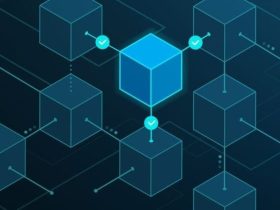Welcome to Cybersecurity Roundup, your daily op-ed–style briefing on the strategic alliances, funding initiatives, and evolving threat landscape shaping the security industry. In today’s edition—dated June 26, 2025—we examine five pivotal developments:
-
How generative AI is amplifying software supply–chain vulnerabilities
-
The U.S. Army’s network lockdown on an Air Force AI program
-
The UK’s 10-year economic blueprint spotlighting AI, cybersecurity, and quantum computing
-
Sangfor’s “AI + IT” tour driving simplified cybersecurity in Hong Kong
-
Ukraine’s IT community at Viva Technology 2025 showcasing resilience and innovation
Together, these stories underscore key trends: the double-edged promise of AI, the rising stakes of interservice data governance, government-backed technology investments, ecosystem-building roadshows, and the global efforts of nation-state tech hubs. Let’s dive in.
1. Generative AI and the Software Supply–Chain Conundrum
Summary: A recent Dark Reading analysis highlights how adversaries are weaponizing generative AI models to inject malicious code into open-source libraries and automated build pipelines, escalating software supply–chain threats.
Key Details:
-
Attack Vectors: AI-driven code suggestions in developer IDEs can slip backdoors into dependencies.
-
Automation Risks: Continuous integration/continuous deployment (CI/CD) tools, if misconfigured, may auto-promote tainted artifacts.
-
Detection Gaps: Traditional static-analysis scanners aren’t trained to flag AI-generated anomalies masquerading as legitimate code.
Opinion & Analysis:
Generative AI promises massive productivity gains for software teams—but without robust guardrails, it morphs into a catalyst for novel attack surfaces. Organizations must augment CI/CD pipelines with AI-aware security scanners and enforce “zero-trust” policies even within internal code repositories. In practice, this means adopting behavioral-analytics platforms that learn normal code-commit patterns and flag outliers, and mandating human review for any AI-introduced changes. Failure to evolve defenses in lockstep with AI-driven toolchains risks a cascade of breaches impacting millions of end users.
Broader Implications:
-
Security Operations Centers (SOCs): Must train analysts to investigate AI-tainted artifacts.
-
DevSecOps Teams: Need to integrate AI-specific threat intel feeds into their workflows.
-
Vendors: Opportunity to deliver AI-hardened code-analysis solutions.
Source: Dark Reading
2. U.S. Army Blocks Air Force AI Program Over Data-Leak Fears
Summary: According to Air & Space Forces Magazine, the U.S. Army has barred a joint Air Force–led AI research project from accessing Army networks due to concerns that sensitive pilot-training data could be exfiltrated by foreign adversaries .
Key Details:
-
Project Scope: The AI initiative aims to use flight-simulator telemetry to optimize training regimens.
-
Security Concern: Army cyber-wargaming exercises revealed potential cross-domain vulnerabilities in the program’s data-sharing protocols.
-
Next Steps: A joint working group will redesign the architecture with air-gapped enclaves and hardware-enforced provenance tracking.
Opinion & Analysis:
Interservice rivalry is nothing new, but here it takes a cybersecurity turn. The Army’s cautionary stance underscores the challenge of balancing innovation with operational security. While federated learning and secure multi-party computation could mitigate data-leak risks, implementation complexity and performance overhead often stall adoption. The workaround—air-gapped enclaves—may safeguard data but slow the AI’s development cycle. Ultimately, DoD CIOs must mandate standardized frameworks for cross-domain AI research, leveraging hardware roots of trust and formal verification to earn consensus across services.
Broader Implications:
-
Defense Contractors: Need to architect solutions that satisfy stringent DoD accreditation.
-
AI Vendors: Could partner with government labs to co-develop hardened inference engines.
-
Policymakers: Should update DIACAP/DIFCAP guidelines for AI-centric workloads.
Source: Air & Space Forces Magazine
3. UK’s 10-Year Economic Plan Champions AI, Cybersecurity, and Quantum
Summary: Computerworld reports that the UK government’s newly unveiled “Innovation Nation” strategy earmarks £15 billion over the next decade for R&D in AI, cybersecurity, and quantum computing, aiming to position the nation as a global tech leader .
Key Details:
-
Funding Breakdown: £7 billion for AI and machine-learning innovation hubs; £4 billion for cybersecurity resilience programs; £4 billion to advance quantum-safe cryptography.
-
Public-Private Partnerships: Incentives for startups to co-locate with academic research centers in Oxford, Cambridge, and Glasgow.
-
Regulatory Sandbox: Launch of a “SecuriLab” environment allowing fintech, medtech, and defense firms to test next-gen security products under live conditions.
Opinion & Analysis:
Long-term visions are crucial—but execution is king. While the funding pledges are significant, the UK must guard against “innovation leakage” where talent and IP migrate to more lucrative ecosystems like Silicon Valley. Strategic incentives—such as R&D tax credits tied to onshore job creation and fast-track visas for specialist talent—will be pivotal. Moreover, the quantum computing investment signals foresight; as algorithms crack existing cryptosystems, only quantum-resistant ciphers will secure tomorrow’s digital infrastructure. Realizing this vision demands seamless collaboration across government ministries, research councils, and industry consortia.
Broader Implications:
-
Startups: Access to capital and sandbox facilities accelerates go-to-market timelines.
-
Cybersecurity Firms: A boon for companies offering zero-trust and post-quantum solutions.
-
Academic Institutions: Must align curricula to reflect emerging industry needs.
Source: Computerworld
4. Sangfor’s AI + IT Roadshow Simplifies Regional Cybersecurity
Summary: South China Morning Post coverage of Sangfor Technologies’ Hong Kong “AI + IT−” roadshow underscores how the security vendor is leveraging AI-powered analytics and simplified architectures to help SMBs and enterprises strengthen defenses without ballooning complexity .
Key Details:
-
Demonstrations: Real-time threat-hunting dashboards that correlate network, endpoint, and cloud telemetry into unified risk scores.
-
Simplification Theme: Pre-configured AI models that require minimal tuning, marketed under the “Plug-and-Protect” banner.
-
Local Partnerships: Collaborations with Hong Kong universities to train 500 students in cybersecurity AI over the next year.
Opinion & Analysis:
Sangfor’s approach addresses the “skills gap” head-on: by embedding AI decision-logic in turn-key appliances, organizations with limited in-house expertise can still reap advanced threat-detection benefits. However, “black-box” AI raises explainability and trust concerns, especially in regulated sectors. Sangfor’s success hinges on providing transparent model insights and robust customization options. The university partnerships are a smart play—building a pipeline of skilled operators who understand both AI and network security.
Broader Implications:
-
SMBs: Lower barrier to entry for enterprise-grade cybersecurity.
-
Resellers: New value propositions around managed AI-driven security services.
-
Regulators: Need to craft guidelines around AI transparency in security contexts.
Source: South China Morning Post
5. IT Ukraine Shines at Viva Technology 2025
Summary: IT Ukraine Association reports that over 30 Ukrainian tech firms showcased resilience and innovation at Viva Technology 2025 in Paris, highlighting solutions from secure communications to battlefield-hardened drones .
Key Details:
-
Exhibit Themes: End-to-end encrypted messaging platforms, AI-guided mine-detection drones, and SaaS tools for supply chain integrity under conflict conditions.
-
Investment Buzz: The delegation secured over €50 million in MoUs with European defense contractors and venture funds.
-
Talent Spotlight: Ukrainian AI developers and cybersecurity specialists garnered multiple awards for open-source security modules.
Opinion & Analysis:
Ukraine’s tech community has demonstrated remarkable agility—pivoting core competencies toward national security imperatives without sacrificing commercial viability. Their presence at VivaTech not only elevates Ukraine’s brand as a tech export powerhouse but also forges critical alliances with NATO-aligned partners. As conflict-driven R&D yields dual-use innovations, the global cybersecurity ecosystem stands to benefit from hardened solutions born under fire. Continued investment and market access will be vital to sustain this momentum.
Broader Implications:
-
European Defense: Opportunities for indigenizing cutting-edge Ukrainian tech.
-
VC Firms: A frontier for impact investing with strategic security dividends.
-
Tech Diplomacy: Model for other nations seeking to leverage tech sectors for economic resilience.
Source: IT Ukraine Association
Conclusion
Today’s cybersecurity headlines reveal a terrain defined by AI’s promise and peril: from generative-AI–fueled supply-chain risk to AI-driven threat detection; from interservice data-leak disputes to government-backed tech roadmaps; and from vendor-led simplification tours to nation-state tech showcases. Key takeaways:
-
AI Duality: Innovation must be matched with AI-specific security controls.
-
Data Governance: Cross-domain collaborations demand airtight provenance and zero-trust architectures.
-
Public-Private Synergy: Long-term funding and sandboxes accelerate R&D, but execution and talent retention are crucial.
-
Ecosystem Building: Regional roadshows and conferences cultivate localized security communities.
-
Resilience Through Innovation: Markets at the geopolitical frontier can yield breakthroughs with global applicability.
Stay tuned for tomorrow’s Cybersecurity Roundup, where we’ll continue to decode the partnerships, funding flows, and threat vectors defining the security landscape. Until then, fortify your defenses—and never underestimate the human element at the heart of cybersecurity.















Got a Questions?
Find us on Socials or Contact us and we’ll get back to you as soon as possible.